38 Must-Have, French-Approved Plants
With Monet’s magic at Giverny

I spotted oakleaf hydrangea shortly after arriving in Paris earlier this month. It was in the courtyard at Victor Hugo’s exotic home on Place des Vosges. After that, I saw oakleaf hydrangea — the current star of my own garden — all over Paris, as well as wild geranium, hairy alumroot, smooth hydrangea, and Southern magnolia. I was fascinated to learn which North American species the French thought special enough to include as exotic ornamentals in their gardens.
Our “native” is Monet’s “exotic”
And so, I had my PictureThis plant ID app open during our daytrip to Monet’s house and garden at Giverny several days later. Monet was first a gardener, but he was also a plant collector. He especially loved flowers, in natural rather than heavily bred forms, so I was curious which N.A. varieties he chose.
It was natural that an art movement so bound up with nature should turn to the garden for its motifs, but while the Impressionists painted gardens and still-lifes of fruits and flowers, only Caillebotte and Monet were real gardeners. … Monet read all the gardening magazines and nursery catalogs, went to flower shows, visited many gardens, and swapped plants with friends.
[I]f he wasn’t painting, he would either be walking around the garden, contemplating the garden, or working in the garden. Blessed with an iron constitution and vast reserves of energy, to the very end of his life he walked around the garden three or four times a day, his mind constantly thinking about improvements, new ideas. — Monet’s Garden
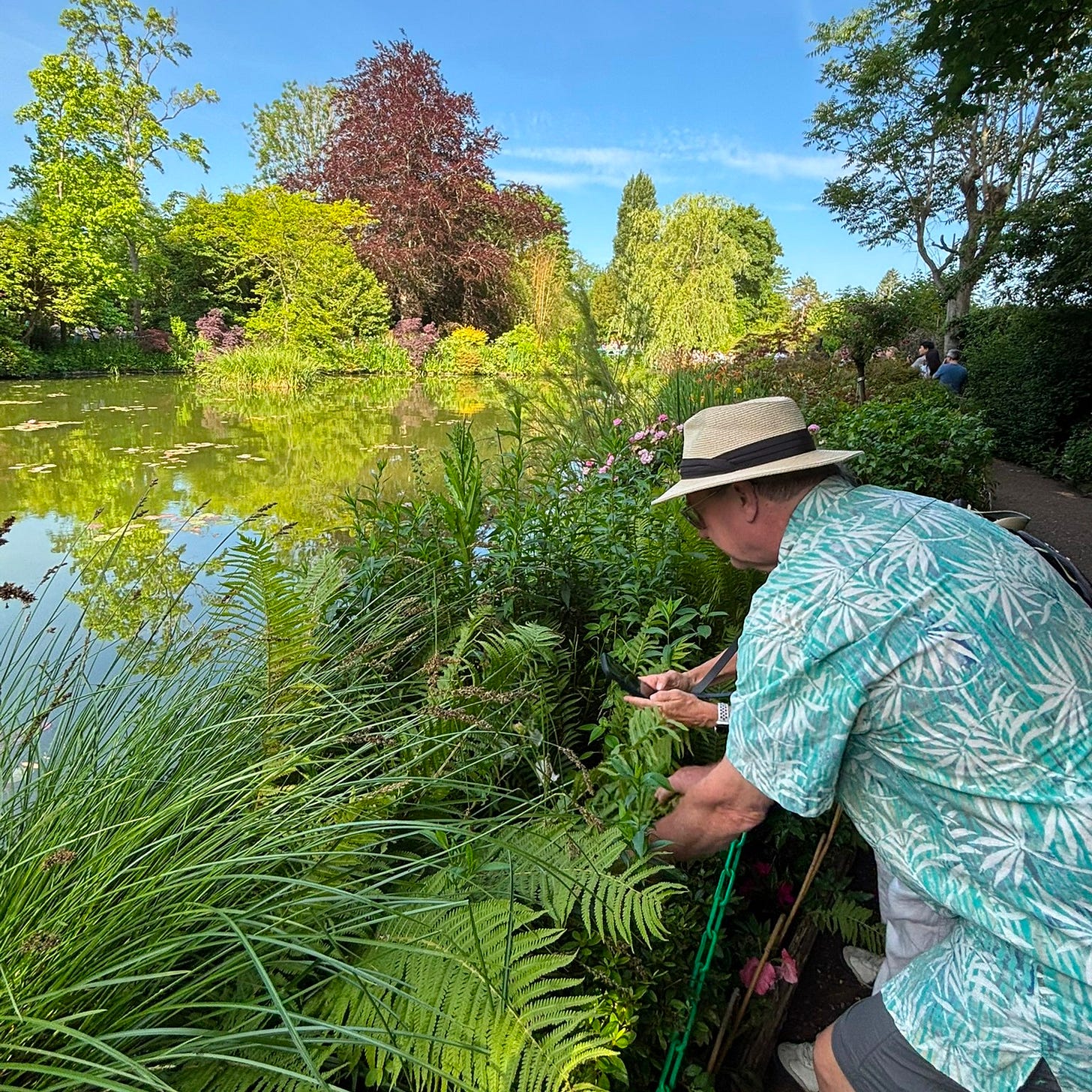
The lily pond at Giverny
We started at the famous lily pond, actually a later addition to the original lot, with low-growing plants along its border and a mix of shrubs on the opposite side of the narrow path, all ringed by trees.
Where the [original] flower garden was all straight lines, the water garden was all curves, arches over paths, circular beds dug out of the lawn on the side of the pond to echo the circular rafts of water lilies. … And where the flower garden celebrated flowers, the water garden emphasized foliage. — Monet’s Garden
Among the perennials along the water, we identified Virginia spiderwort, red columbine, and plains coreopsis, and large ferns that look similar to N. A. natives but were not. The shrubs include Pacific rhododendron and common elderberry. (Monet’s water lilies are not North American, but the beautiful white-yellow fragrant water lily (Nymphaea odorata) would fit in nicely.) I understand there are also sweetgums and a flowering dogwood around the pond, and hollies, kalmias and poplars that might be North American.
Around Monet’s house
The long rectangular beds separated by narrow paths leading to the house are a riot of color, dominated this month by poppies — European field poppies, oriental poppies, and California poppies.
Monet made abundant use of wildflowers at Giverny. … Poppies and verbascum were allowed to self-seed and grew where they fell, and together with Monet’s dense planting contributed to the garden’s cottagey jumble of beauty effect. — Monet’s Garden
N.A. natives in these beds include blue wild indigo, crevice alumroot, and lance-leaved coreopsis, backed by more Pacific rhododendron and a huge Southern magnolia along the fence.
Midsummer is when N.A. natives really shine, and so I missed their peak at Giverny. The picture below of a “paintbox” square arrangement includes Canada goldenrod, orange coneflower ‘Goldstrum,’ plains coreopsis ‘Elegant,’ and purpledisk sunflower, for example. The garden also features Black-eyed Susans with red centers and numerous N.A. sunflower species — common sunflower and (switching to Latin) Helianthus x lactiflorus, H. multiflorus, H. saliciflorus, and H. pauciflorus.
In the fall, N.A. natives shine in the blue borders — notably New England aster and smooth aster — and along the entire front of Monet’s house, where the porch arbor is covered with Virginia creeper, which turns vibrant red in autumn.
Planting for himself vs. for crowds
We can assume Monet himself planted these N.A. natives. After Monet’s death and the death of his stepdaughter, the gardens at Giverny were virtually untended for 50 years, until their restoration in the late 1970s, funded largely by Americans like Readers Digest co-founder Lila Acheson Wallace. The current gardeners maintain the same color schemes as Monet and attempt to use the same varieties. However, they have changed the style of gardening:
Monet “massed his flowers together to the right and left in radiant clumps – of the same variety and color,” [according to Monet contemporary J.C.N. Forestier]. … Monet’s plantings in masses of one variety are effective dramatically, but only for a short period of time. Today a more impressionistic style is favored. This compromise has been evolved to make sure that the display hums a steady flowery tune for the six months the garden is open to the public. — Monet’s Garden
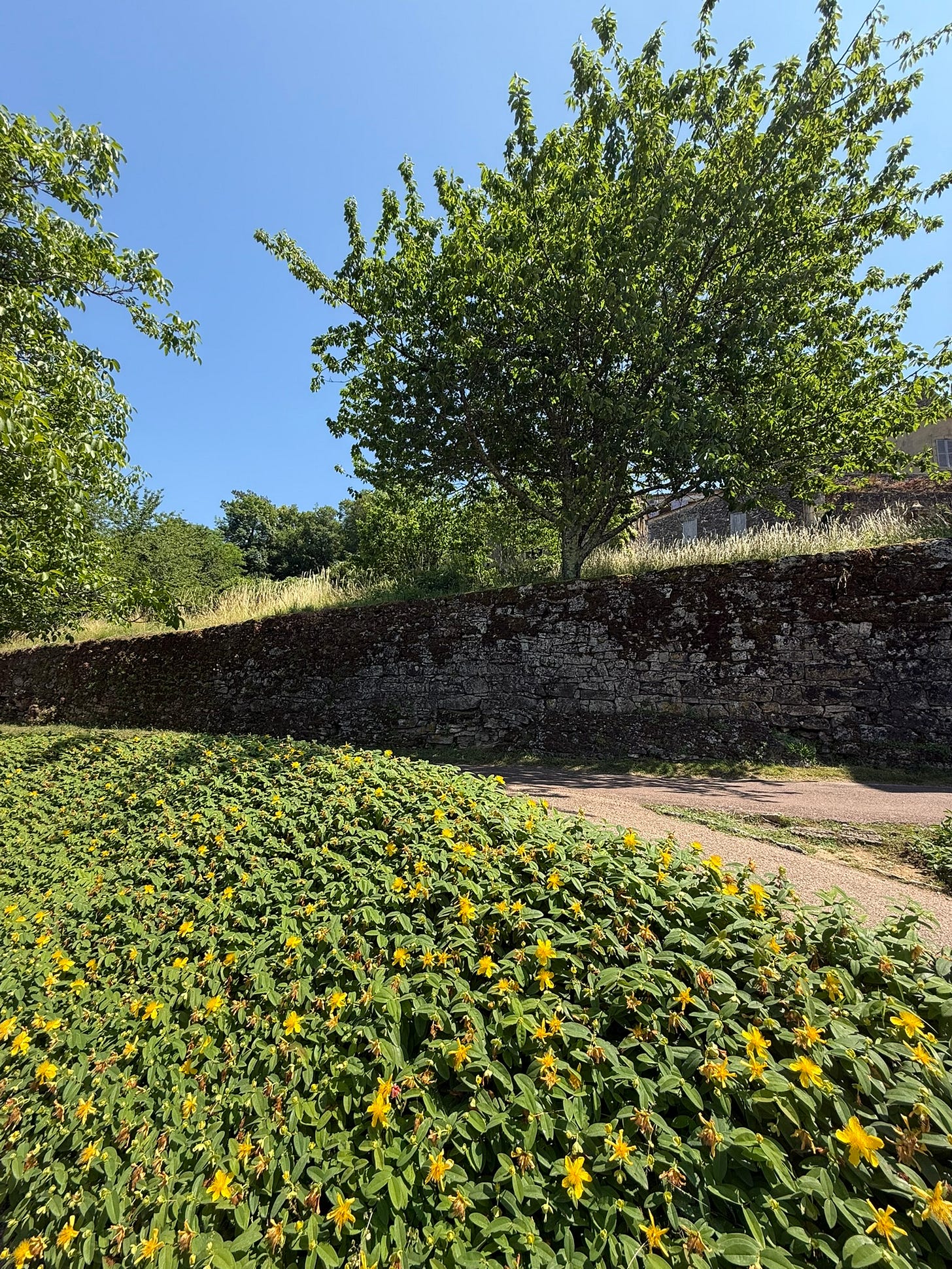
N.A. natives in the Dordogne
I spent my second week in France in the Dordogne region with my daughter Sofi, who was patient with my plant ID habit. We found shrubby St. John’s wort covering a slope up to the entry to the amazing Jardins de Marqueyssac and Adam’s needle planted against the historic mansion where we stayed in St. Emilion. Famously aggressive trumpet vine was practically everywhere; I’m guessing it’s invasive there. Other sightings: American hornbeam, California lilac, crossvine, woodbine, obedient plant, pokeweed (that surprised me!), and purple coneflower.
Amusez-vous bien!
— Heather
P.S. Unfortunately, Jason Ingram had to cancel for July 19. Stay tuned for my newsletter based on is book, How to Photograph Gardens.
P.P.S. To support my work, please share this newsletter with a friend, become a paying subscriber, or encourage me with a like or comment. I love hearing from you!
10 Weekends to Wild Challenge #10: Name your summer project
As my garden surges towards its high-summer peak, I’m absolutely NOT doing any of the traditional summer gardening chores — mulching, staking, filling gaps, deadheading, even watering (except for a few late transplants). The plants are one their own until it’s time for fall planting, aside from occasional mowing and pruning.
Until fall, I plan to enjoy my garden: strolling its paths several times daily, gazing at it as I exercise in my shed-gym, relaxing on a lounge surrounded by purple blossoms, and ending the day with cocktails and conversation in our midnight garden. However, I do have some hardscaping projects in mind that Pete and I will tackle when the weather is not sweltering: a trellis for Virgin’s bower on the side of the house, a water feature for critters (finally), brick edging in the par terre, and — if there’s time — an arbor for trumpet vine.
What’s your summer hardscaping project?
ICYMI
Challenge #1: Check your winter views
Challenge #2: Score some seating
Challenge #3: Name your theme
Challenge #4: Get thee to a nursery!
Challenge #5 & 7: A daily stroll
Challenge #6: Note what’s blooming
Challenge #8: Move plants around
Challenge #9: Remove some invasives
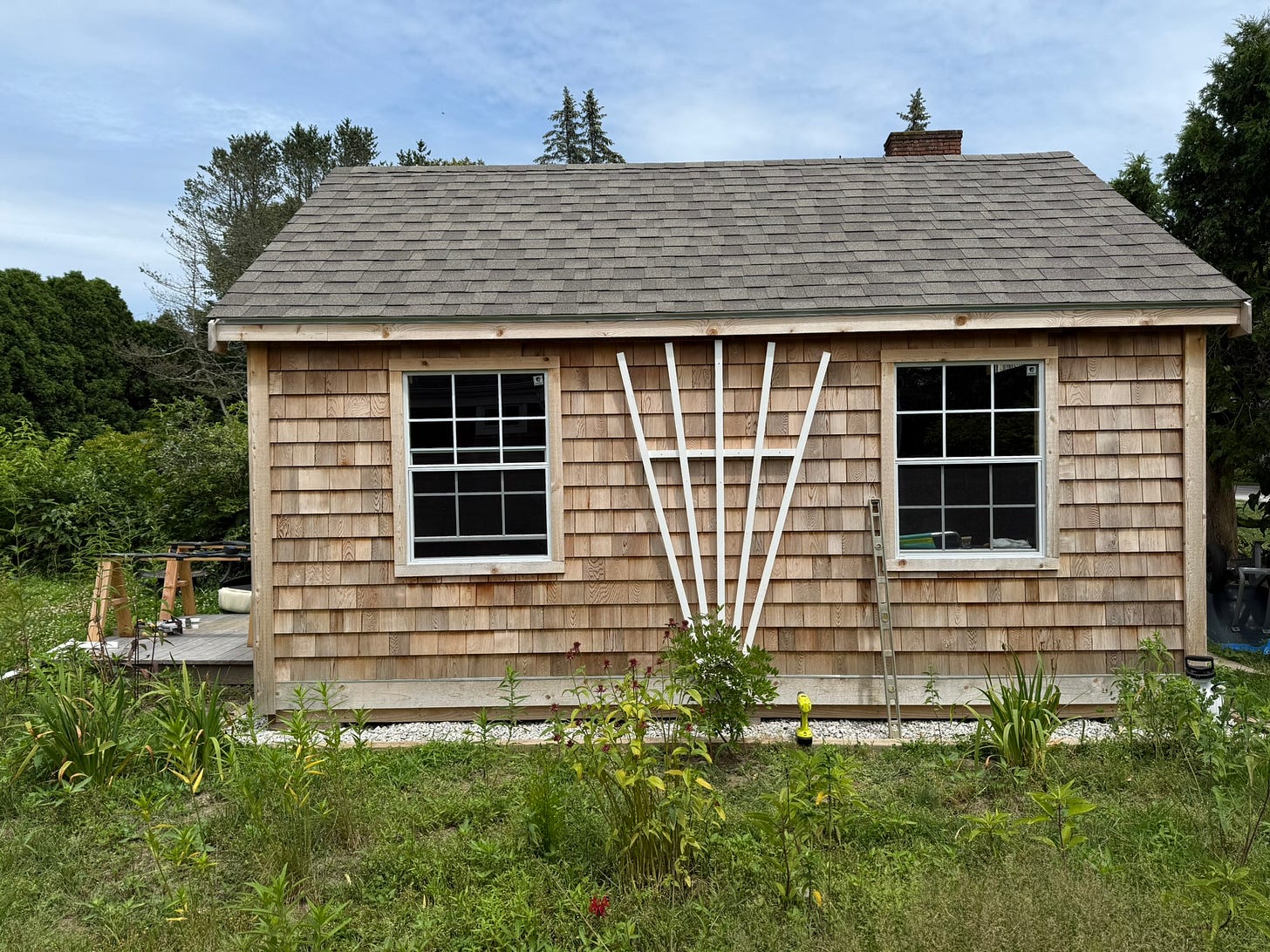
Why, How, Wow!
Why? Native plants don’t need watering.
Thanks largely to removing 53 million square feet of lawn, exceeding goals set by governor Jerry Brown, the City of Los Angeles has reduced its water consumption — both per person and (despite 500,000 more people) in aggregate.
Studies suggest that if Angelenos just stopped watering their lawns, reducing per person consumption to the same amount of water that Western Europeans average, the city would solve many of its water problems. Nearly half of residential water use in greater Los Angeles, it turns out, goes to outdoor landscaping. — The New York Times (gift link)

How: Purple-leaved native cultivar alternatives to Japanese maples
Amid and above the blooms in his garden, Monet added color and contrast with purple-leaved plants, from towering Japanese maples to ground-hugging alumroot. You can do the same in your yard with purple-leaved American native cultivars. Sure, they aren’t exactly native, but many of you already have more than two-thirds for the birds and these cultivars are adapted to local soil and precipitation and may provide more ecosystem value than exotics. Listed roughly from tallest to shortest with links to range maps:
American Smoke Tree (Cotinus obovatus, south)
Eastern redbud cultivars, e.g., ‘Forest Pansy’ and ‘Ruby Falls’ (weeping!) (Cercis canadensis, eastern half of U.S.)
Elderberry cultivars, e.g., ‘Black Lace’ (Sambucus nigra, most of U.S.)
Purple-leaved sand cherry (a hybrid of northern U.S. native Prunus pumila and Asian native Prunus cerasifera)
Beautyberry cultivars, e.g., Pearl Glam (Calicarpa americana, southeast)
Ninebark cultivars, e.g., ‘Summer Wine' (Physocarpus opulifolius, midwest and east)
Foxglove beardtongue cultivars, e.g., ‘Husker Red’ (Penstemon digitalis, eastern half of U.S.)
Native alumroot cultivars, e.g., ‘Forever Purple’ (Heuchera americana and others, native ranges)

Wow! An (almost) all-American garden in Paris
Can you believe this typically French city garden — spotted outside the Christian Dior store on tony Avenue Montaigne — is mostly American natives? And the tiny, non-native box hedge might as well be a dwarf cultivar of inkberry holly (Ilex glabra). Ooh-la-la!
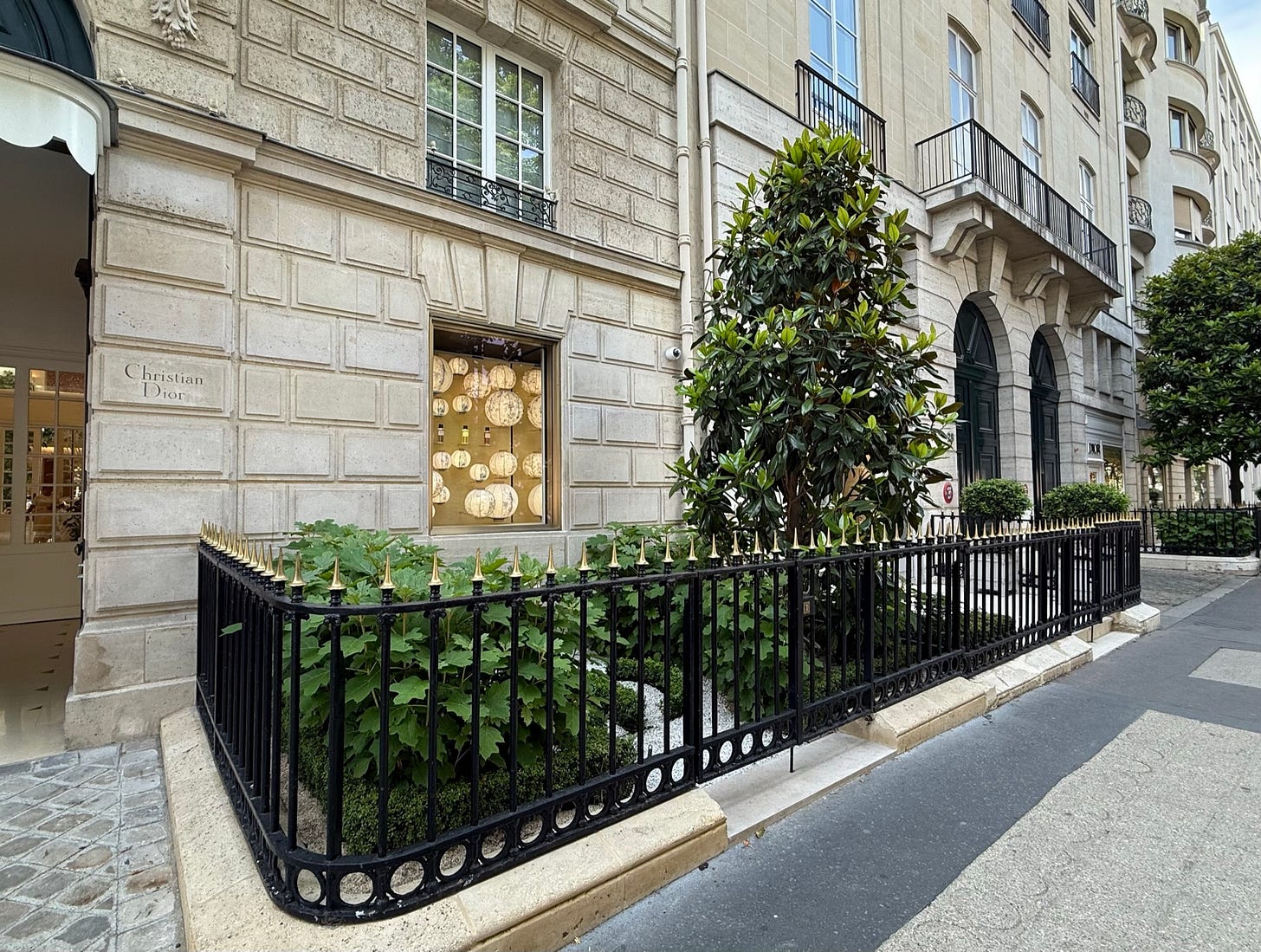
One more thing…
Chattanooga has been named the US’s first National Park City thanks to decades of regulation and rewilding.
If you’re considering adding boulders as your hardscaping project, see fellow Substacker Laura Fenton’s Gardenista article.
California readers: ICYMI, see this LA Times article on showstopping local natives.


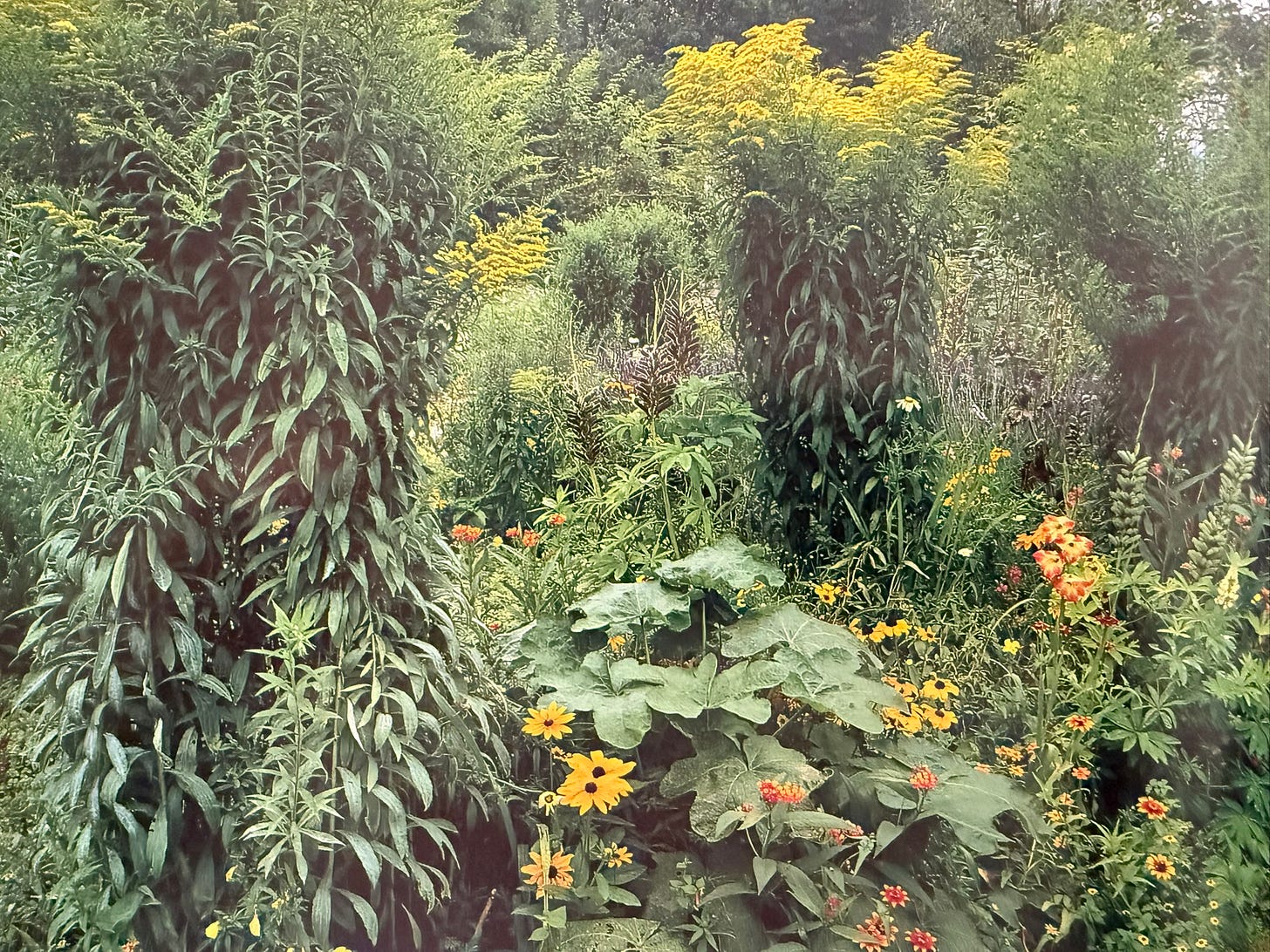

This is a very interesting post! I am in Thonon-les-Bains, France, this summer, on the southern shore of Lake Geneva. I'm seeing North American native plants all over the place around here as well, such as: Adam's Needle, trumpet creeper, tulip poplar, sweetgum, southern magnolia, echinacea, and more! Isn't it interesting how the botanical community has historically prized exoticism. Probably both for aesthetic novelty and for the success that exotic ornamentals have in an environment without naturally co-evolved predators. Hindsight....
I loved my visit to Monet's garden - esp the arched walkway and the perennial planting - not so keen on the volume of visitors!